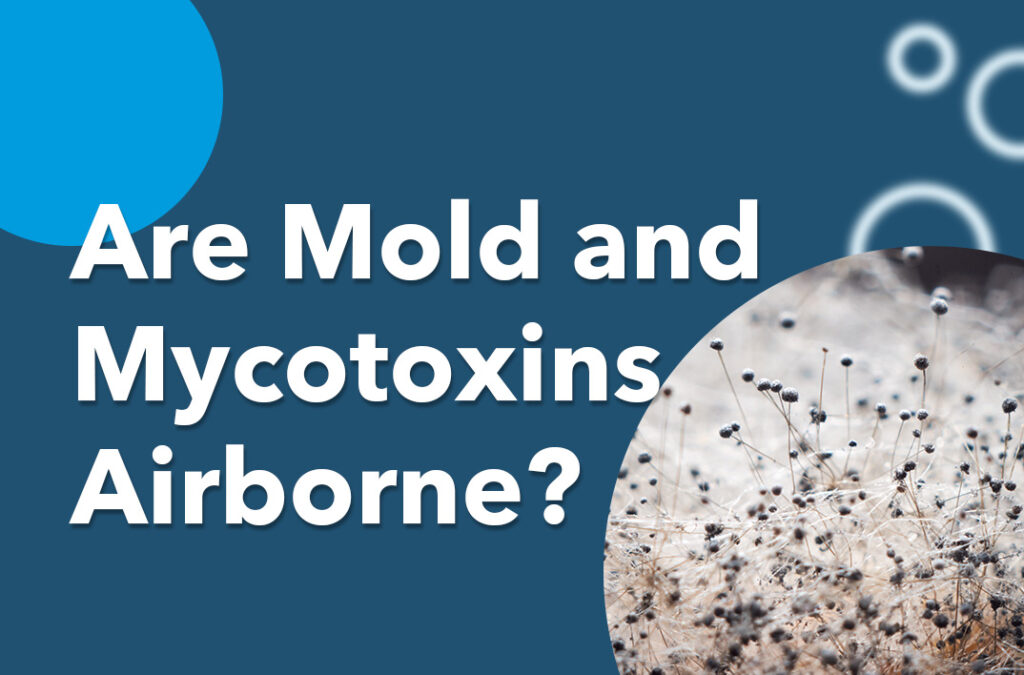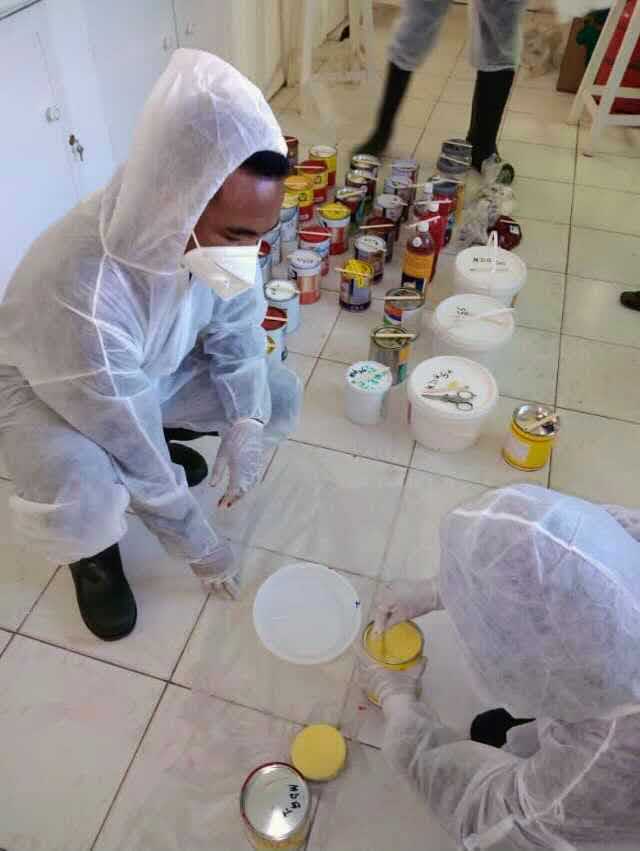The Necessity of Mycotoxin Testing in Agricultural Products to Ensure Consumer Safety And Security
The necessity of mycotoxin testing in farming items is a vital element of public health and wellness and security that warrants detailed examination. Mycotoxins, harmful substances created by certain fungi, can penetrate numerous crops, leading to considerable health and wellness dangers for customers, such as cancer causing effects and organ damages.
Comprehending Mycotoxins
Mycotoxins, hazardous additional metabolites generated by particular fungi, offer a significant threat to agricultural items and human health and wellness. These substances are created by numerous varieties of mold and mildews, such as Aspergillus, Fusarium, and Penicillium, which can infect crops both pre- and post-harvest - Mycotoxin testing Services. One of the most common mycotoxins consist of aflatoxins, ochratoxin A, fumonisins, zearalenone, and deoxynivalenol (DON)
Mycotoxin contamination can occur under certain environmental problems, such as high moisture and temperature level, which favor the development of mold and mildew. Agricultural items like cereals, nuts, spices, dried out fruits, and coffee are specifically at risk. The visibility of mycotoxins in these assets can lead to significant financial losses because of lowered plant returns and the necessity for extensive testing and decontamination procedures.
Comprehending the biochemical nature and formation of mycotoxins is essential for developing reliable mitigation approaches. Study has actually revealed that mycotoxins show a variety of chemical structures and buildings, making discovery and elimination difficult. Advanced analytical strategies, including chromatography and mass spectrometry, are used to recognize and evaluate mycotoxins in agricultural products, making sure that contamination levels continue to be within risk-free limits established by regulative bodies.
Health Dangers of Mycotoxins
Offered the significant risks connected with mycotoxins in farming items, understanding their effect on health and wellness is extremely important. Mycotoxins, poisonous secondary metabolites generated by fungi, posture serious risks to both animal and human health. Chronic direct exposure, also at low levels, can lead to a variety of negative wellness impacts, consisting of immunosuppression, teratogenicity, and carcinogenicity. Aflatoxins, amongst the most notorious mycotoxins, are categorized as Group 1 carcinogens by the International Firm for Study on Cancer Cells (IARC), largely influencing the liver and enhancing the threat of hepatocellular cancer.
Intense mycotoxin poisoning, although less typical, can cause serious and prompt illness such as liver damages, stomach disruptions, and hemorrhaging. Ochratoxin A, an additional powerful mycotoxin, is linked to kidney damages and has prospective carcinogenic results. Fumonisins, mainly impacting maize, are connected with esophageal cancer cells and neural tube defects.

Usual Sources of Contamination
Understanding the typical resources of contamination is vital for efficiently managing and alleviating the risks posed by mycotoxins. Mycotoxins are harmful secondary metabolites you can look here generated by particular kinds of fungis, which can contaminate agricultural products at numerous stages of production, processing, and storage. The key sources of contamination include area conditions, post-harvest handling, and storage space environments.
Area conditions play a significant function, with variables like weather, crop vulnerability, and soil health influencing fungal development. Plants such as corn, peanuts, wheat, and tree nuts are particularly vulnerable to mycotoxin-producing fungi like Aspergillus, Fusarium, and Penicillium varieties. Insufficient crop rotation and poor parasite administration can intensify the risk of contamination.
Post-harvest handling is an additional crucial stage where contamination can occur. Mechanical damage during harvesting and transportation creates entry points for fungis, while incorrect drying out techniques can leave wetness levels high enough to sustain fungal development.
Storage space settings add significantly to contamination threats. Inadequately kept storage space facilities with high moisture and temperature degrees create suitable conditions for mycotoxin production. Routine examinations and proper storage problems are essential in suppressing this risk.
Mycotoxin Testing Methods
Effective management of mycotoxin contamination pivots not just on recognizing possible sources yet additionally on applying robust screening methods to discover these hazardous substances. Mycotoxin screening approaches can be broadly classified right into chromatographic and immunochemical methods. High-performance liquid chromatography (HPLC) and gas chromatography-mass spectrometry (GC-MS) stand for innovative chromatographic methods understood for their high level of sensitivity and accuracy. These techniques are skilled at quantifying numerous mycotoxins in complex matrices, making them invaluable for complete evaluation.
On the other hand, enzyme-linked immunosorbent assay (ELISA) and lateral circulation assays are popular immunochemical approaches. ELISA, particularly, is extensively made use of as a result of its cost-effectiveness, ease of usage, and quick turnaround time. Side flow assays provide quick, on-site screening capacities, making them ideal for area applications where instant decisions are essential.
In addition, advancements in molecular biology have presented PCR-based approaches efficient in spotting mycotoxin-producing fungi at genetic levels, providing an anticipating method to contamination risk. Integrating these diverse techniques enhances the reliability and comprehensiveness of mycotoxin discovery, making certain that agricultural products meet safety and security standards and safeguarding customers from potential wellness threats.
Advantages of Routine Evaluating

Regular mycotoxin screening uses considerable benefits that significantly boost farming security and top quality. Among the primary benefits is the defense of consumer health and wellness. Mycotoxins, toxic substances produced by certain fungis, can pollute food and present severe health and wellness dangers, including cancer and severe try here poisoning. Normal testing makes certain that polluted products do not reach customers, thus mitigating carcinogen.
Additionally, regular screening helps in maintaining the integrity and online reputation of agricultural producers. By rigorously regulating and keeping track of mycotoxin degrees, manufacturers can prevent pricey recalls and lawful effects. This not only guarantees compliance with stringent global security criteria however likewise promotes consumer count on and loyalty.

Verdict
The requirement of mycotoxin testing in farming items is emphasized by the significant health and wellness dangers positioned by these poisonous substances. It boosts the reputation of manufacturers and cultivates depend on within the farming supply chain, inevitably guarding public health and wellness.
The requirement of mycotoxin testing in farming items is a critical facet of public wellness and security that warrants thorough exam. Mycotoxins, toxic compounds produced by particular fungis, can infiltrate various plants, leading to considerable health dangers for consumers, such as cancer causing impacts and body organ damage.Mycotoxins, toxic additional metabolites created by certain fungis, offer a significant threat to agricultural products and human health and wellness.Provided the considerable dangers associated with mycotoxins in agricultural items, comprehending their influence on health and wellness is paramount (Mycotoxin testing Services).The necessity of mycotoxin testing in farming products is emphasized by the considerable health risks positioned by these toxic compounds